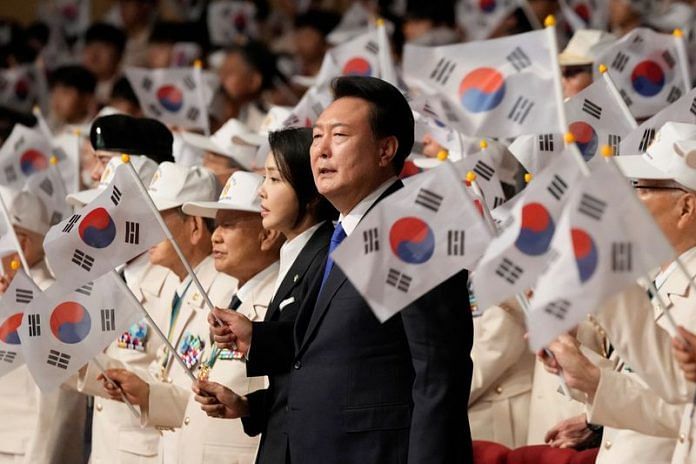By Hyonhee Shin
SEOUL (Reuters) – Seventy four years after the Korean War began, North Korean troops are building new fortifications, occasionally inviting warning shots from South Korean counterparts across a border that has been frozen in a state of war.
In recent weeks, North Korea has deployed a large squad of soldiers to build what appeared to be anti-tank barriers, plant land mines and reinforce tactical roads within the heavily armed Demilitarised Zone (DMZ), according to the South’s military.
The moves resulted in rare run-ins with South Korean troops when they fired warning shots, and some North Koreans were even killed by their own landmines as they pushed closer to the demarcation line, South Korean officials have said.
The line was drawn when the two sides, and their international backers, ended the conflict in 1953.
Tuesday marks 74 years since the beginning of the war, when North Korea’s military stormed over the border into the U.S.-backed South. The fighting would eventually involve 20 other nations participating as part of U.N. forces and claim millions of lives, but it only ended in an armistice, not a peace treaty, leaving the Koreas in a technical state of war.
After small periods of detente, tensions have surged in recent months, with the North having developed an arsenal of nuclear weapons and declared the South is a “primary foe,” no longer a partner for unification.
More recently, the North has flown hundreds of balloons carrying trash in protest against South Korean activists flying anti-Pyongyang leaflets, prompting Seoul to scrap an inter-Korean military pact and take steps to resume propaganda loudspeaker broadcasts which Pyongyang has long denounced.
Pyongyang’s recent actions along the border may be linked to the change in its inter-Korean policy, some analysts say.
“The North’s ongoing low-intensity, simultaneous provocations appear meant to express hostility toward the South in light of its recent policy shift,” Park Young-ja, a senior fellow at the Korea Institute for National Unification in Seoul, said in a recent report.
“While consolidating unity internally, they could also seek to divide public opinions in the South, and for actual military purposes, to explore how those actions can be of threats.”
In his war anniversary speech, South Korean President Yoon Suk Yeol painted a contrast between the neighbours, saying the North remained “the last frozen land on Earth” as it takes “the path of regression,” unlike the democratic, wealthy South.
He slammed the mutual defence pact sealed last week by North Korean leader Kim Jong Un and Russian President Vladimir Putin as “anachronistic,” and Pyongyang’s balloon launches as “base, irrational.”
Yang Moo-jin, president of the University of North Korean Studies in Seoul, said the inter-Korean standoff has intensified into something akin to Cold War psychological warfare.
“The return of the outdated balloon and leaflet campaigns shows that the Cold War still persists on the Korean peninsula,” he said.
(Reporting by Hyonhee Shin; Additional reporting by Josh Smith; Editing by Raju Gopalakrishnan)
Disclaimer: This report is auto generated from the Reuters news service. ThePrint holds no responsibilty for its content.



